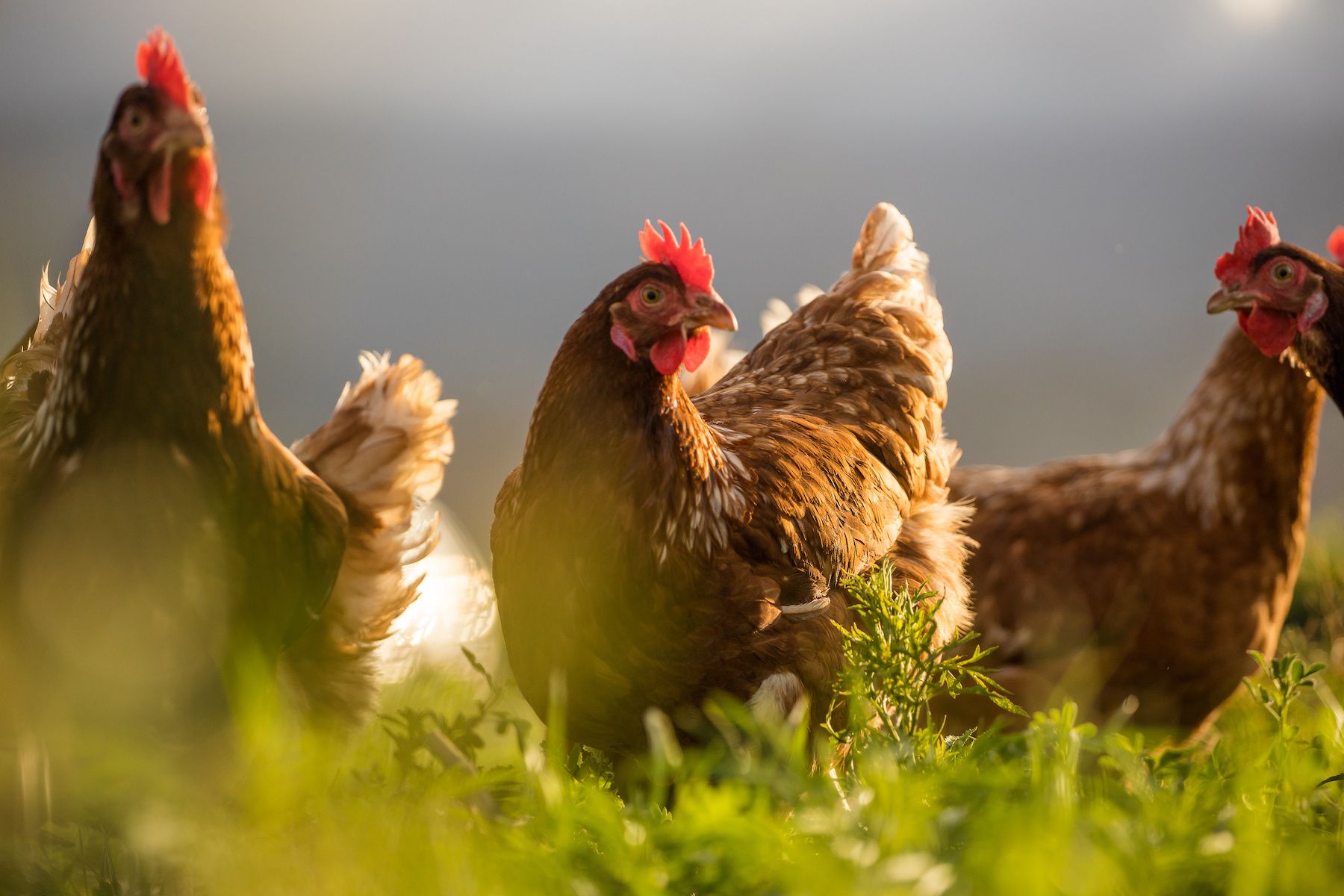Bird Flu Virus Detected in US for First Time in 2 Years
The CDC addressed an HPAI A(H5N1) virus infection reported by a commercial dairy farmer in Texas.
The HPAI A(H5N1) virus, otherwise known as avian influenza or the bird flu, was recently detected in a dairy farmer in Texas. It’s the first report of bird flu in the US since April 2022. The CDC released a statement on the status of the virus in the country and issued recommendations on how to avoid it.
What’s the Issue?
The CDC issued a statement discussing avian influenza and is currently working with the USDA, FDA, and state departments to monitor the virus within the US. The overall risks of the virus growing into a larger public health issue, however, remains low, according to the CDC.1
Avian influenza is often detected in wild birds and poultry farms across the US | image credit: Dewald / stock.adobe.com

- The virus was detected in a cow at a cattle farm. Despite concerns of it spreading from cattle to other animals and possibly humans, the pasteurization process has proven to kill all bacteria and viruses before the distribution of dairy products.1
- “Currently, HPAI A(H5N1) viruses are circulating among wild birds in the United States, with associated outbreaks among poultry and backyard flocks and sporadic infections in mammals,” wrote the CDC in a statement. They also sequenced the virus genome and found similar instances in other wild birds and poultry. However, cattle and human viruses lack the changes needed to better adapt to affecting mammals.1
- The virus is closely related to 2 existing HPAI A(H5N1) candidate vaccine viruses and manufacturers could quickly make a vaccine if necessary.
READ MORE: Are We Close to a Universal Flu Vaccine?
Why it Matters
For just the second time, someone in the US has contracted avian influenza. It is highly pathogenic, yet no severe illness or death has occurred in the US due to the virus, with only 900 cases detected worldwide.1
- Avian influenza was first reported in the US in April 2022 in Colorado by a person who came into contact with poultry infected with the virus.1 It was then reported for a second time in Texas when a dairy farmer experienced eye redness after contacting cattle. No further cases have been reported as of now.
- While some outbreaks worldwide led to a total count of around 900 reported cases, the spread has decreased substantially since 2016, which makes this recent case so alarming.
- Because influenza viruses are constantly changing, the CDC is conducting ongoing research initiatives and keeping Americans informed on the evolution of the bird flu.
Expert Commentary
- “The fact that it spread to one human case is certainly making us want to take this very seriously. But folks should know that right now, the risk to them is very low,” said Dr. Mandy Cohen, Director of the CDC.2
- “As we look more closely at the virus's genetics, it is very similar to the virus that we've seen spread in bird populations. And so, we're not seeing an important change in the virus that would increase our alarm,” said Dr. John Brownstein, chief innovation officer at Boston Children's Hospital and an ABC News medical contributor.2 “The risk really is concentrated in those that are working in close proximity to animals and birds. And those are the people that we, of course, need to improve our surveillance and make sure that we identify any case as early as possible.”
- “We feel in a good place to be able to understand this, learn more, and be prepared. But we are taking it very seriously. And so, you are seeing a mobilization of all of the government levers that we have to make sure that we are prepared,” continued Cohen.2
In Depth Insights
The CDC has informed the public on where bird flu originates, the symptoms to look out for, and recommendations on how to treat and, most importantly, avoid the avian bird flu.
- Symptoms include mild to moderate illness. For example, humans who come in contact with the virus may experience a cough, sore throat, shortness of breath, or eye redness—which was reported by the most recent case—among other symptoms. Although no severe illnesses have been reported, the virus could cause pneumonia, sepsis, or respiratory complications.1
- For farmers, poultry workers, and livestock owners, the CDC highly encourages the proper use of personal protective equipment (PPE), such as an N95 mask, eye protection, and gloves, with hand washing a must.1
- “People should avoid being near sick or dead animals or surfaces contaminated with the animal’s feces, litter, raw milk, or other byproducts when not wearing respiratory or eye protection. As always, people should not prepare or eat uncooked or undercooked food or related uncooked food products, such as unpasteurized (raw) milk or raw cheeses, from animals with suspected or confirmed HPAI A(H5N1) virus infection,” concluded the CDC.1
Extra Reading
- What to know about the risks of the bird flu outbreak (NPR)
- Is it safe to drink milk and eat chicken? What precautions to take during the bird flu outbreak (CNN)
References
1. Health Alert Network (HAN) - 00506 | highly pathogenic avian influenza A(H5N1) virus: identification of human infection and recommendations for investigations and response. emergency.cdc.gov. Published April 5, 2024. https://emergency.cdc.gov/han/2024/han00506.asp
2. What you need to know about bird flu after person became infected in Texas. ABC News. Published April 3, 2024. https://abcnews.go.com/Health/bird-flu-after-man-infected-texas/story?id=108815479
Exploring Challenges, Opportunities for Community Pharmacists in Tobacco Cessation
April 24th 2024By addressing integration barriers associated with implementing tobacco cessation programs in the community pharmacy, community pharmacists can “significantly impact public health by increasing access to effective cessation support,” wrote investigators.